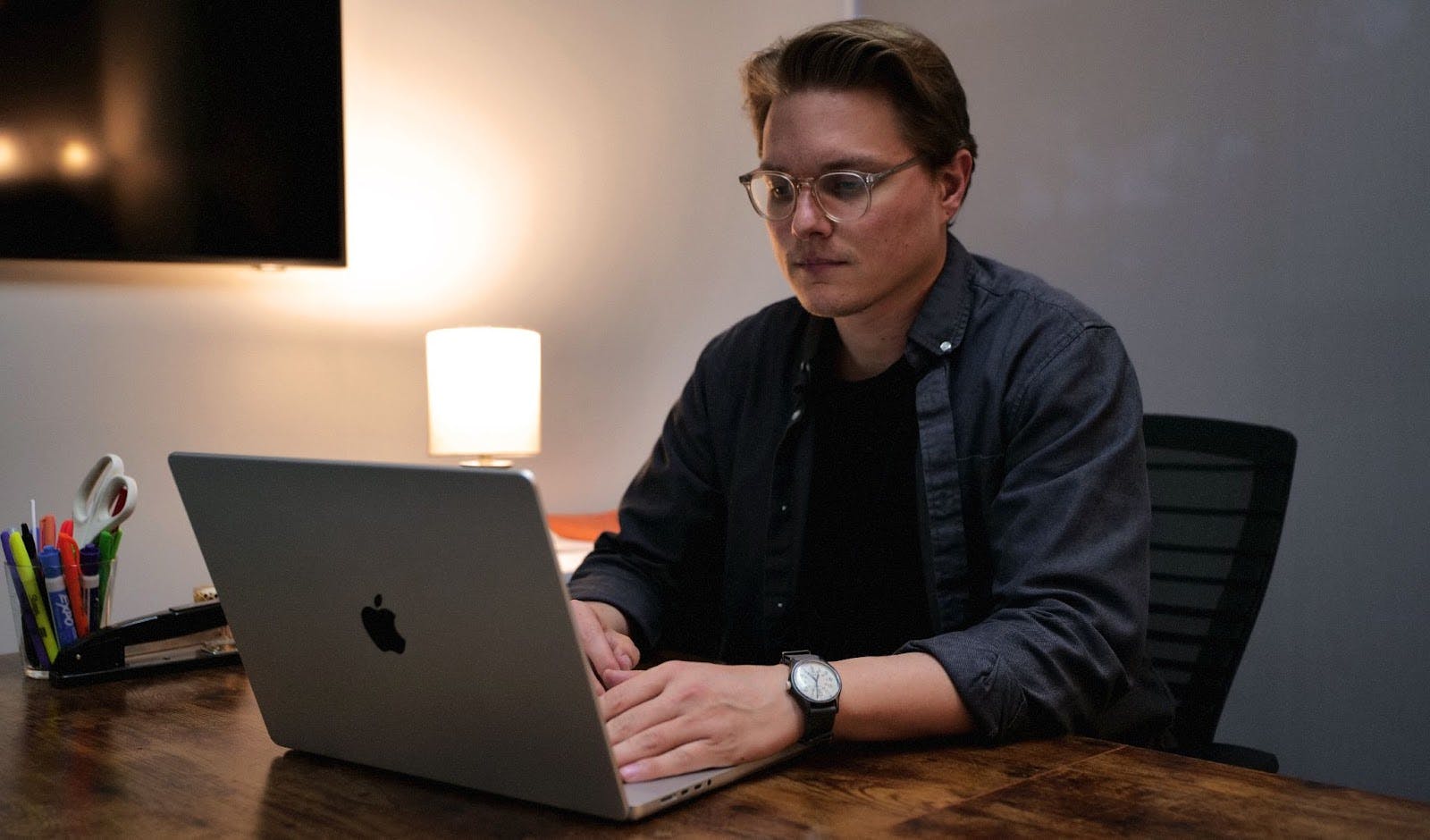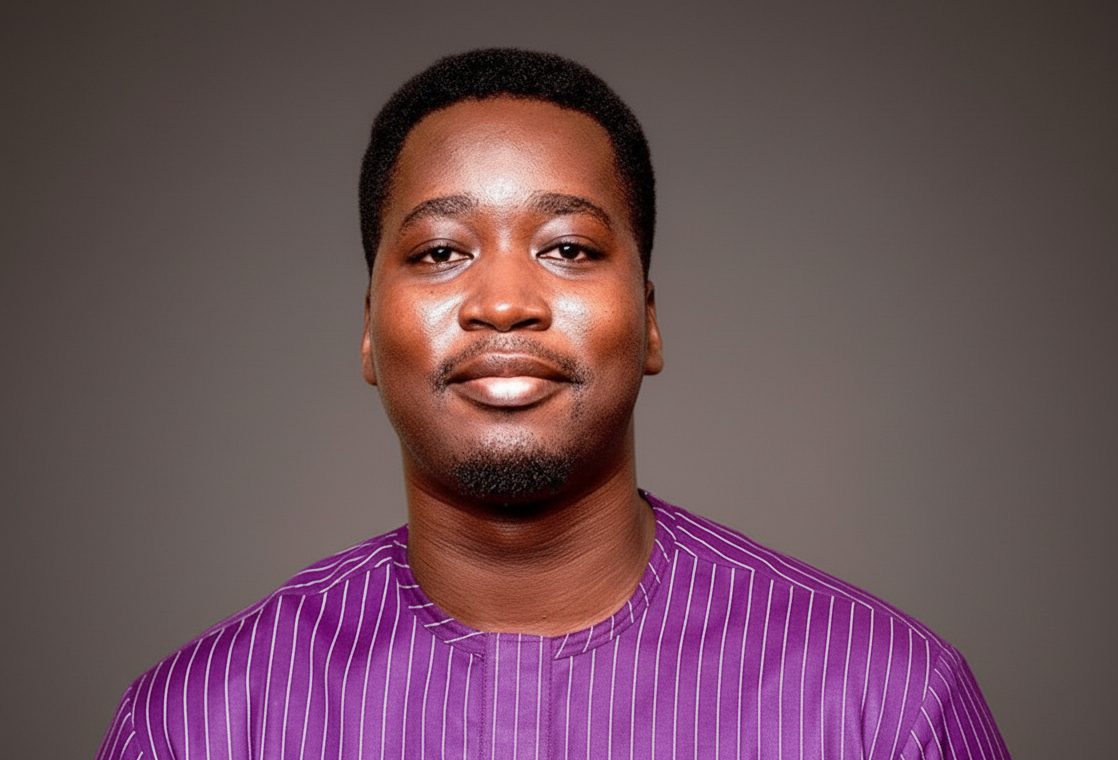With 15 years of experience in art direction, Egor Kosolapov has been at the forefront of visual work for some of the most prominent brands, receiving numerous awards and accolades. His most recent role is at The Daily Wire, a major digital media company with a monthly reach of over 200 million, featuring high-profile figures such as Ben Shapiro and Jordan Peterson.
What first drew you into the world of art direction and graphic design? How has your career evolved over time, from your early work in Russia to your current role in the U.S.?
I’ve been in various forms of art since a very young age, so in many ways, my career is the result of my parents’ ambition. While they couldn’t support it financially, they guided and inspired me through every stage of my creative education — from kindergarten art studios and art school to earning a bachelor’s degree in Art Education and Graphic Design. By the time I had to choose a career path, I already knew exactly what I wanted to do. Graphic design was not only my passion, but also the area where I felt most confident. By the time I graduated from my hometown university, I had already gained hands-on experience working as a graphic designer at a couple of local advertising agencies.
Over the next few years, I expanded my skill set to include 3D, motion design, packaging, and brand identity development. I focused on building cross-disciplinary expertise so I could solve more complex business problems and approach creative tasks from unexpected angles.
This mindset helped me grow quickly — I moved from a regional agency to some of the top studios in Moscow, including Art. Lebedev Studio and BBDO. I quickly advanced from Junior Graphic Designer to Senior Art Director and was charged with major projects for such well known brands as Yandex, Beeline, and Baltika, as well as international companies from the UK and UAE.
Along the way, I earned more than 50 national and international awards, was named one of the Top 5 Creatives in Russia in 2020, and was invited to judge several creative festivals in the following years.
Here in the U.S., I was commissioned to work for The Daily Wire — one of the largest media platforms, with millions of viewers across a wide range of platforms.
Today, I work as a Senior Graphic Designer, primarily developing creative for the brands of Dr. Jordan B. Peterson and Ben Shapiro, contributing to projects that are both large in scale and rich in impact.
Wow! These are amazing achievements. Having worked across cultures—from Moscow to Dubai to Los Angeles and Nashville — what are some of the most interesting differences you’ve encountered in creative communication?
Having worked across Moscow, Dubai, Los Angeles, and Nashville, I’ve experienced some fascinating contrasts in creative communication — especially in terms of work ethic, cultural expectations, and visual aesthetics.
In Moscow and across Europe, there’s a strong emphasis on elegance, subtlety, and intellectual depth in design. Creative work often leans toward clever, sometimes hidden metaphors and nuanced messaging — ideas that take time to develop and reveal themselves. There’s a clear value placed on originality and crafting something that feels conceptually refined and artistically elevated.
By contrast, Dubai’s creative scene, heavily influenced by its startup culture and rapid innovation, moves much faster. Design there is highly trend-aware, adaptive, and visually driven. The focus tends to be on what’s current and dynamic, with a preference for bold visuals and immediate impact — a necessary response to a competitive and fast-paced market where speed often wins.
In the United States, especially in commercial settings, the creative approach is often more direct and results-oriented. Design is bold and built to sell — less about subtlety and more about clear, effective messaging. That doesn’t mean the work lacks creativity or polish — many brands still aim for originality — but the priority is business growth. Great ideas are welcome, but they’re expected to serve performance and scale.
That said, my work at The Daily Wire stands out as an exception to many of those rules. Here, we’re not just following trends — we aim to set them. There’s a strong drive to elevate design and establish a visual language that reflects taste, quality, and cultural influence. We’re encouraged to look globally for inspiration — from Europe’s refined visual metaphors to the boldness of American media — and blend the best of each to create iconic styles for our talents and shows. It’s a rare space where design isn’t just a function of the business — it helps define the brand itself.
According to AdPeak, you were ranked #5 among the best creatives in Russia in 2020. What did that recognition mean for your career?
Yes, 2020 was a breakthrough year for me creatively. One of the biggest and most meaningful projects I worked on — The Greatest Read for Beeline — launched that year. It turned out to be a major success, sweeping numerous national and international awards. That project played a big role in me being ranked #5 among the best creatives in Russia by AdPeak, and it also contributed to BBDO, the agency I was with at the time, being named the most awarded agency in the country that year.
You’ve collaborated with Yandex, Beeline, and other well-known brands. Which of these projects challenged you the most? In what way?
Yandex and Beeline were my first major projects as an advertising Art Director. These companies are essentially the Russian equivalents of Google and AT&T. Both projects were challenging and valuable learning experiences, but the most demanding one was definitely my biggest campaign for Beeline — “The Greatest Reads.”
At the time, I had just graduated from advertising school and transitioned from Russia’s largest branding agency, Art. Lebedev Studio, to the well-known advertising agency BBDO. While I had strong skills in branding, advertising was an entirely different world — with its own tools, methods, and creative processes. I had only a vague idea of how things worked in this new environment.
Thankfully, my team helped me get up to speed quickly, and we dived into the project. The challenge wasn’t just the federal scale of the campaign, or that we were working with a celebrity artist, Noize MC, or even that we had to navigate new AI technology — though all of that played a role. What made it truly challenging was the pace at which I had to learn and adapt. I had to work three times harder to match the team’s experience, often staying late to catch up and find my footing in this new industry.
Despite the pressure, I rose to the occasion. I applied everything I knew, learned quickly, and gave it my all — and as a result, we created what became one of Russia’s best advertising campaigns of 2020. The project received wide recognition, top industry rankings, and multiple awards.
For some of your works, you’ve also received recognition from Red Apple, ADCR, Effie, White Square Awards, and other awards. Which one meant the most to you and why? Which project are you most proud of?
All of the awards I’ve received hold special meaning for me because each one represents a key chapter in my career. But if I had to choose the one that means the most, it would be the Effie Global — it marked the pinnacle of my career in 2021.
Effie Global is one of the most prestigious international awards in the advertising industry, with its headquarters in New York. To even qualify, a project must win at the national level (in my case, Effie Russia), then succeed regionally (Effie Europe), before finally competing on the global stage. Winning it means your work has stood out not only locally but also among the best projects and agencies worldwide.
I received that award for my campaign “The Greatest Reads” for Beeline — a large-scale, high-impact project that remains the most awarded and career-defining work I’ve done so far. I take immense pride in it, not only because of the recognition it brought but because of the creative and strategic challenges it pushed me to overcome. That project validated my ability to create work that resonates on a global level — and that’s something I’ll always be proud of.
Now, working as Senior Graphic Designer at The Daily Wire, you help shape visual identities and styles of the company’s top talents. With a monthly network reach of 220 million and 2.3 million lifetime subscribers, how do you think your work impacts audiences around the world?
The Daily Wire is one of the leading media companies in the U.S., with a strong focus on American culture and politics. But our reach extends far beyond national borders. While our core audience is American, we also speak to English-speaking viewers around the world who share similar cultural foundations and values.
In a broader sense, I see our audience as the Western world — people connected by a shared cultural context, historical background, and a common visual language. That’s who I design for. My work isn’t tailored to individual countries’ peculiarities, but rather speaks to universal elements within the Western experience.
When shaping the visual identities of our top talents, designing show graphics, or creating content for YouTube and social media, I always keep that global-yet-cultural framework in mind. It’s essential to deeply understand the visual codes, historical references, and emotional undercurrents that resonate across this audience — whether someone is in Texas, London, or Sydney.
At its core, design is about connection. It’s about creating something that makes people feel they belong — that they’re part of a larger conversation or community. When you get the visual tone right — through color, typography, photography, or layout — you help deliver a message that not only informs or entertains, but also unites. And with a monthly network reach of over 220 million, that impact is both powerful and far-reaching.
You worked on high-profile projects including the Ben Shapiro Show and Jordan B. Peterson’s digital presence. How did you approach the visual concepts for such different personalities that might be tapped into their unique recognized style? How do thumbnails and social visuals reflect someone’s identity and depth?
Yes, you’re absolutely right — working with high-profile talents like Ben Shapiro and Dr. Jordan B. Peterson is a challenge, even for seasoned creatives. It requires a careful balance between hitting business goals — like reach, engagement, and views — and staying true to the unique personality and voice of each talent. Every element of their visual presence has to align with how they speak, how they think, and how they connect with their audience.
When approaching the visual styles for Ben’s and Jordan’s content, I had a bit of a home-field advantage. I had followed both of them for years before joining The Daily Wire, so I already had a strong understanding of their brands and public personas. That foundation allowed me to quickly grasp what would feel authentic for each of them — both visually and tonally.
But more than that, what really helped was genuinely caring about the work they do. As someone who admires their contributions, I felt personally invested in creating visuals that not only looked good but also felt right — something that would resonate with their audiences and reflect the depth of their ideas. I wasn’t just designing for them — I was designing as a fan, which gave me a strong intuitive sense of what would feel inspiring, iconic, and worthy of their legacy.
My background in branding, advertising, and communication strategy allowed me to translate those instincts into precise, evocative visual systems. For each talent, I developed a style that reflected their unique tone — from Ben’s sharp, direct energy to Jordan’s more thoughtful and layered presence — and carried that through in thumbnails, social visuals, and motion graphics across their content and shows.
Thumbnails, in particular, are a powerful tool. They may seem small, but they play a huge role in shaping perception. A strong thumbnail communicates not just what a piece of content is about, but who it’s coming from. It’s about making sure the first visual impression carries the weight of a recognizable identity — and for personalities like Ben and Jordan, that identity is everything.
The content of the creators you work with can be divisive. Do you feel the need to agree with the message in order to create visuals for it? Have you ever had to navigate projects that didn’t fully align with your personal beliefs?
You’re right — the content I work with can sometimes be divisive. But I don’t necessarily see that as a negative. In fact, being polarizing can be a sign that the message is cutting through the noise. It can provoke discussion, invite reflection, and get people talking — which is often the first step toward understanding. As the saying goes, “truth is born in debate,” and I believe that holds true in many cases.
When it comes to whether I need to personally agree with every message I help visualize — I’d say it’s less about full alignment with each individual statement, and more about understanding and resonating with the broader philosophy. If I feel the project has purpose, relevance, and integrity, I can fully engage with it creatively.
That said, I’ve definitely worked on projects that didn’t fully align with my personal beliefs, especially early in my career. As a junior creative, you rarely get to choose your assignments. I’ve worked with brands like alcohol and tobacco — not because I endorsed them personally, but because those experiences gave me a chance to grow, learn, and build my craft. And I think that’s valid. Every project teaches you something, whether it’s about design, communication, or your own boundaries as a creative.
Looking ahead, what kinds of projects excite you the most? Are you drawn more to commercial work, artistic exploration, or social initiatives?
I’m most excited by the idea of stepping into a more creative leadership or co-creator role — not just designing for content, but actually being involved in creating it. Working in a media company with major talents and a multimillion-viewer audience has been incredibly inspiring. It’s pushed me to think beyond execution and consider how I might use my skills to shape stories, messages, or even formats myself.
While I’m not yet sure what specific direction that might take, the idea of being on the other side of content creation — while still designing and using my visual expertise to elevate it — feels both challenging and energizing.
I’m also deeply drawn to working with impactful voices — podcasters, creators, and shows that genuinely influence people in positive, meaningful ways. So if I had to define what excites me most, it would be projects that sit somewhere between commercial work and artistic exploration, with a clear sense of purpose and cultural relevance.











